

By: Thomas Lin
There is no better time than now to emphasize the importance of Advocacy for foreign language education in all levels of education here in the United States. Since the start of the recession in December, 2007, many state and local governments have been hit with massive budget deficits and the typical method city leaders concoct to reduce these deficits is by cutting spending in education, social services, and public safety. In the field of education, programs in the arts and foreign languages are typically the first to be targeted by the school board to be phased out. In addition to this, class sizes are increased, classified staff members are reduced, and vital afterschool programs such as sports are eliminated. These dire circumstances have forced educators into a difficult situation forcing them to fight for their programs and the education of their students. Through Advocacy, we hope to educate foreign language educators about the additional roles they have to take on so they can build a strong foundation necessary to weather through the current storm and any dark clouds in the horizon.
Budget Deficit and Teacher Cuts
Three of the largest school districts in the United States are facing huge budget deficits this year and the result is a cut in spending that hits education the hardest. In three of the nation's largest school districts in California, Illinois, and New York, cuts in education will result in pink slips to 22,000, 17,000, and 15,000 teachers respectively. With massive layoffs on the horizon, foreign language teachers will be at the crosshairs of the school boards who are looking to find any way they can to reduce spending during these difficult times. Many language programs are being eliminated across the country in favor of one or two larger programs or even replacing teachers with instructional software. No language programs are safe and unless you have the knowledge, tools, and commitment to protect and save your program, there will be serious consequences to the future of your program and that of your students.
Different Perspectives
The concept of Advocacy and fighting to save your program may be a foreign concept to most foreign language teachers from Asian countries. This is because the profession often garners a higher social status in Asia where teachers are valued and respected for their work. In contrast, the public perception of teachers in the United States is very low including pay and job security. Teaching is seen as an "undignified, unglamorous profession." So naturally, education is often the first things to be cut when the local government has a budget deficit. This has created an added necessity to include Advocacy as an important topic in a teacher's professional development training. Many native foreign language teachers have to embrace Advocacy in order for their program to survive instead of quietly letting them disappear. The consequences of losing these foreign language programs for our current and future generations will be a huge detriment to competitiveness of our country in the long term. Therefore, even teachers need to acquire new information and tools to be able fight for what they have work so hard to build - that is a foreign language program.
Teaching Advocacy
Two years ago, I wrote an article about the very basics of Advocacy after hearing of a few reports from teachers who were facing the very possibility of losing their foreign language programs. In addition to this article, we also distributed an Advocacy Kit, which was an informative guide on Advocacy written by seasoned veterans with many years of teaching experience. It had been four years since the kit was revised and since then, much of the information had become outdated or obsolete and a plan to revise the kit was implemented. In addition to the aging Advocacy Kit, there lacked a central location for teachers of Japanese to acquire information and training about Advocacy and that issue also needed to be resolved. A second project was initiated to build a website to support Japanese language teachers. The result of these two initiatives was the creation of the Advocacy Kit 3rd Edition and the Advocacy Website Project.
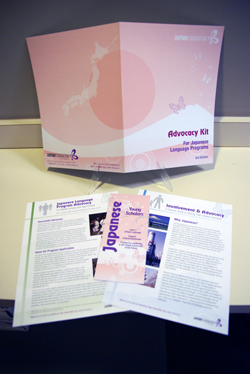
In 2004, the Japan Foundation, Los Angeles (JFLA), created the first Advocacy Kit to stress the importance of Advocacy as something that the teacher must take part in addition to their role as an educator. The kit contained four booklets on the topics of Building a Strong Program, Maintaining a Program, Advocating to Administrators, and Advocating to Parents for the three target audiences of Administrators, Parents, and Teachers. There was also a VHS movie documenting the positive effects of having a Japanese language program at local schools in Los Angeles. The kit was updated in 2005 with a new booklet covering the topic of AP. In 2007, the VHS video was converted to DVD and the Advocacy Brochure was also created to promote Japanese language Education.
During the 2009 fiscal year, we decided to revise the Advocacy Kit a third time to update the information and format to make it more appealing to our target audience. A survey of the old materials from several leaders in the Japanese language teaching community gave us a good idea of what needed to be improved and we tried to incorporate as many of the suggestions as possible. One of the largest changes made to the kit was the transition of many of the articles into online PowerPoint files with graphics to make the information more appealing and easier to digest. PDF versions of the PowerPoint and the script are also available for download. As for the actual kit that is mailed out, a folder with two leaflets and a brochure was created to send out to administrators, parents, teachers and anyone involved with foreign language education. The materials in the Advocacy Kits can be downloaded from the Advocacy section of our website and complimentary hard copies can also be ordered.
Advocacy Website Project
http://www.aatj.org/advocacy/index.html
In order to penetrate, introduce, and stabilize Japanese language education in the United States, JFLA came up with the idea of creating a centralized Advocacy website for the purpose of organizing and consolidating resources that would be beneficial for Japanese language educators. A task force was then created with members from the three leading Japanese Language Teacher's organization here in the United States (ATJ, NCJLT, and AATJ) with the first meeting held in Los Angeles. Members of this project included Project Leaders Susan Schmidt (AATJ) and Maki Watanabe Isoyama (JFLA); and Taskforce Members Nana Suzumura (NCJLT), Kurt Thompson (NCJLT), Yasu-Hiko Tohsaku/Janet Ikeda (ATJ), and Michio Tsutsui (ATJ) with special advisors Martha Abbot (ACTFL) and Emily Spinelli (AATSP).
At the meeting, Advocacy sites from other foreign language teacher's organizations such German and France as well as national ones such as ACTFL were analyzed for ideas on building a site for Japanese. After careful review, the taskforce decided to split into two groups to gather different types of information to populate the new site. The links team consisting of Michio Tsutsui and Kurt Thompson, both from Seattle, were tasked with finding useful links from other websites and providing a usefulness rating for the links. The article team consisting of Nana Suzumura and Yasu-Hiko Tohsaku/Janet Ikeda were in charge of finding authors in the education community to contribute articles for the website. Currently, the information that was gathered is being categorized and some of it has made it to AATJ's Advocacy site with the rest soon to follow.
It is our goal that this site will serve as a hub of information that is routinely updated to stay fresh and up-to-date so Japanese language teachers as well as foreign language instructors in general will have an assortment of tools to rely on in their fight for their student's education. We hope that everyone will be able to benefit from the materials we worked so hard to provide.
Site Review
The sites below were used as references in creating the Advocacy website for Japanese language education. These sites feature much information and tools and would be beneficial for any foreign language teacher.
ACTFL and Discover Languages
https://www.actfl.org/advocacy
The American Council on the Teaching of Foreign Languages has a website that gives a general overview on the topic of Advocacy and provides useful information including a definition of Advocacy, who should advocate, messages to deliver, techniques, and a list of resources. Linked to a separate URL is the Discover Languages website, which includes materials developed to promote their "Year of Languages" campaign. This was introduced in 2005 to build public awareness about the importance of learning languages and cultures. There is a plethora of materials on this site including contests, postcards, quizzes, feature sites, research information, and products for purchase. Teachers will find the resources on this site a bit overwhelming, but thorough in advocating foreign languages.
JNCL-NCLIS
https://languagepolicy.org/advocacy/
The Joint National Committee for Languages and the National Council for Languages and International Studies has an Advocacy section on their website, which features a new video providing a guideline on how to make a legislative visit to voice your views, concerns, and suggestion. For those who want to learn about Advocacy, they have two very good tutorials on organizing an Advocacy Workshop and facilitating a Letter Writing Campaign. There are also many links to external sites with useful information on Advocacy.
AATF and the World Speaks French
http://www.frenchteachers.org/
http://www.theworldspeaksfrench.org/
The American Association of Teachers of French has compiled a massive number of links on their website to advocate for the teaching of French. Although most if not all the materials are for French language teachers, the same principles can be applied for other languages. In addition, they have produced a French Advocacy Wiki site to advocate, start and improve a French program for teachers, parents and students. Finally, they are linked to The World Speaks French website, which was created to promote the study of French language and culture in the United States. Materials include a list of benefits for studying French and downloadable promotional materials such as print ads, posters, banners, brochures, and post cards.
AATG and the Goethe Institut
http://www.aatg.org/
http://www.goethe.de/enindex.htm
The American Association of Teachers of German produces many articles and products to promote the teaching of the language, literature, and culture of Germany here in the United States. Their website features a list of articles covering Advocacy Tips as well as an online store selling many products you can purchase in support of German language education. In addition to AATG, the nonprofit organization Goethe Institut also promotes the study of German with an array of vibrant promotional materials, which are downloadable from their website. Similar to the Japan Foundation, the Goethe Istitut also promotes cultural and informational exchanges.
References
Lewin, Tamar; Dillon, Sam. "Districts Warn of Deeper Teacher Cuts."
The New York Times. 20 April 2010. Web. 17 May 2010.
<The New York Times>
Hu, Winnie. "In New York's Suburbs, Teachers Feel Budget Axes."
The New York Times. 11 May 2010. Web. 11 May 2010.
<The New York Times>
Ihejirika, Maudlyne. "Devastating layoffs loom in school districts statewide."
Chicago Sun-Times. 28 March 2010. Web. 13 May 2010.
"Long, Ray; Garcia, Monique; Secter, Bob. "Quinn details $2 billion in spending cuts; education hit hard."
Chicago Tribune. 24 February 2010. Web. 13 May 2010.
<Chicago Tribune>
Holman, Tayla. "Boston Public Schools Budget Cut: Fine Arts and Foreign Language Most at Risk."
Associated Content. 19 January 2009. Web. 13 May 2010.
Beasley, Katie. "Columbia County schools cut jobs, programs and add furloughs."
The Augusta Chronicle. 28 April 2010. Web. 6 May 2010.
Hartocollis, Anemona. "As Social Status Sags, Teachers Call It a Career."
The New York Times. 17 April 2002. Web. 6 May 2010.
<The New York Times>
Dillon, Sam. "Guest-Teaching Chinese, and Learning America."
The New York Times. 9 May 2010. Web. 10 May 2010.
<The New York Times>
By: Thomas Lin

The Japan Foundation, Los Angeles, hosted a booth this year at the 2010 CLTA State Conference in San Diego. This was their 40th year supporting foreign language education in the state of California. During the conference, JFLA alongside the Consulate General of Japan in Los Angeles, organized booths promoting Japanese language education, as well as travel to Japan. Members of the Japanese language team and the Director of JFLA were present to hand out our award winning Erin goods as well as answer any questions visitors to our booth had about anything Japan.

One of the highlights of this conference was the awards luncheon where JFLA presented Lucy Miyagawa with the Japan Foundation Grant to receive teacher training at the Japanese Language Institute in Urawa for two months over the summer. Miyagawa-sensei currently teaches Japanese at John F Kennedy High School in Sacramento, CA, and is also an advisor for the Anime Club. In addition to JFLA, the governments from France, Germany, Italy, Quebec, and Spain were also in attendance to present awards to the teachers of their respective languages.
CLTA also recognized outstanding educators during the conference and this year Yo Azama of FLAMCO was selected to receive this honor. Azama-sensei currently teaches Japanese at North Salinas High School and also presented a session at the conference titled “Maximizing Students’ Language Proficiency Through Standards-Based Unit Plans.” We wish both these hard working teachers continued success and we are confident that the future of Japanese language education in California has a very bright future with these two leading the way.
By: Thomas Lin
The start of registration for the 2010 JLPT is just around the corner and we are gearing up our preparations for the New test. Many of you are probably aware that there will be major changes to the format of the JLPT this year and to explain these changes, the JLPT Administration Committee has created a brochure explaining the main differences between the New and Old test. This brochure is available for download from our website and you can also request hard copies from us. In addition to the brochure there is also an executive summary of the Guidebook with a overview of the changes. The full Guidebook (In Japanese) as well as sample questions for all sections and all levels of the New Test are also available for download from the Worldwide JLPT Website. We also provided a translation of the Test Contents chapter from the Guidebook, which we thought would be useful for both teachers and students who are preparing for the New test. Please make sure to read over the materials during your planning.
We have also updated our website to reflect the upcoming changes and have included some common questions in the FAQ section. Please also make sure to read through this section prior to contacting us with any questions you may have. This year, we are working to finalize new test sites in Philadelphia and Boston, and we are excited about this new expansion. Test takers from Boston have been requesting their own test site for many years now and we hope to open a new site in one of America’s oldest cities. In addition to the new test site in Philadelphia, we hope to accommodate more test takers in the Northeast region.
Make sure to check back on our website in July when we will be releasing more details including the venue at each test city, registration start/end time, cost, etc.
Official Worldwide JLPT Website:
http://www.jlpt.jp/e/
By: Thomas Lin
The Japan Foundation recently developed two free websites to facilitate the teaching of Japanese language and culture online. Using anime and manga, which is the cornerstone to Japanese pop culture, JF offices in Urawa and Kansai each developed a website to promote the learning of Japanese language and culture to the youth of the world.
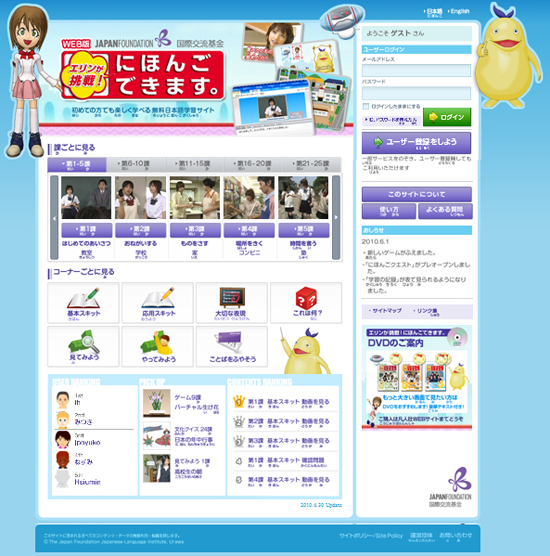
http://erin.ne.jp/
Based on the popular anime/drama series “Erin’s Challenge,” the Japan Foundation’s Japanese-Language Institute, Urawa, took the materials from the three volume instructional series and converted it into an easy to navigate online language learning website. This site features many skits taken from the series and includes a script, mini lessons, games and quizzes to reinforce the lessons highlighted in the skits. Prior to the development of this website, the only way to view this series was on limited stations around the world or to purchase the three-volume DVD with workbook. Now anyone with an internet connection can view the series onlineand access the many useful tools that are included to learn the language and culture of Japan. Users can also create an account on the website opening up additional features such as avatar creation, score tracking, and Nihongo quest, a simulator where you avatar can walk through an animated city while interacting with different elements in the city.
The Anime and Manga website was developed by the Japan Foundation’s Japanese-Language Institute, Kansai, to emphasize the difference in Japanese expressions based on they type of person you are. For example, those who have studied Japanese know that there are different expressions for men and women and there are also different Japanese expression based on region and also your profession. This site is very useful if you are interested in learning the different variations and it features eight special characters created just for this site to teach the information. Expressions are categorized based on the character with manga style scenes to reinforce the materials. There are also quizzes, games, and links for anyone who is interested in learning more about Japanese expressions.
With all the information available on both these website, teachers and learners of Japanese should definitely bookmark these URLs and benefit from these invaluable tools.
By: Thomas Lin
The Japan Foundation, Los Angeles, houses a public lending library for books, CDs, and DVDs on Japanese language, arts, and culture. In this issue of Breeze, I will be reviewing three new books that we recently acquired along with two new DVDs.
Books
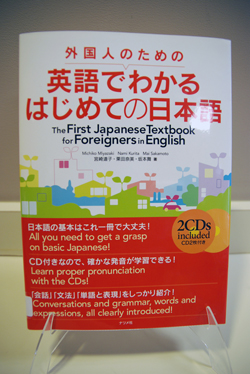 The First Japanese Textbook for Foreigners in English
The First Japanese Textbook for Foreigners in English
This textbook was written by Michiko Miyazaki, Nami Kurita, and Mai Sakamoto is intended as a beginner’s self guide to learning the Japanese language. Two CDs accompany the textbook in order for the learner to hear authentic Japanese in order to pronounce the language correctly. Lessons are divided into 16 chapters each featuring a different topic. Each chapter starts out with a skit to highlight the main topic followed by drills and explanations of words, expressions, and grammar points. For those who are interested in acquiring basic Japanese on your own, this is a good book to start out with.

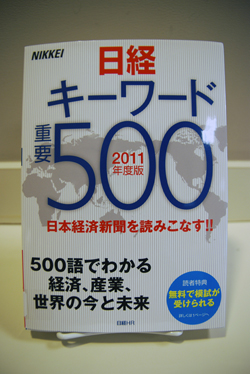 Nikkei 500 Essential Keywords 2011 Edition
Nikkei 500 Essential Keywords 2011 Edition
This book contains 500 key words emphasized by Nikkei to understand various topics including economics, industry, and the present and future world. The 2011 edition is divided into 19 chapters each covering a different topic that ranges from the “Japanese Economy” to “Society General.” This book is intended for native Japanese readers so a high level of Japanese language proficiency is required to understand the contents. If you are interested in learning new words used in different industries, this is a good book to read.

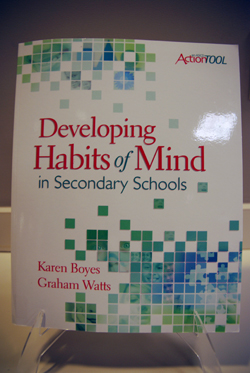 Developing Habits of Mind in Secondary Schools
Developing Habits of Mind in Secondary Schools
Building on work begun by Arthur Costa and Bena Kallick, Developing Habits of Mind in Secondary Schools translates the Habits of Mind philosophy of learning into practical classroom applications. Internationally acclaimed educators Karen Boyes and Graham Watts provide ideas, resources, examples, and strategies that address each Habit of Mind and scaffold learning across all content areas. The action tool s five major sections follow five dimensions of growth that help students to move from initial exploration through comprehensive internalization of the habits, using them as lifelong intelligent behaviors for effective communication, decision making, problem solving, and lifelong learning.
This action tool is valuable not only for student development but also for school improvement planning and teacher professional growth. When the Habits of Mind philosophy permeates an entire school and the habits become a part of everyday life for all the school becomes a transformed organization and a powerful learning community. Developing Habits of Mind in Secondary Schools comprises more than 50 tools to help teachers and administrators foster the Habits of Mind among students, staff, and parents. All tools are available for download.

DVDs
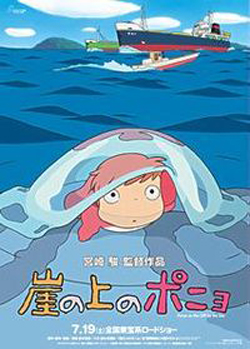 Ponyo
Ponyo
Welcome to a world where anything is possible! Academy Award winning director Hayao Miyazaki (2002, Best Animated Feature, Spirited Away) and legendary filmmaker John Lasseter together with Disney bring to life a heartwarming and imaginative telling of Hans Christian Andersen’s classic fairy tale The Little Mermaid. A young boy named Sosuke rescues a goldfish named Ponyo, and they embark on a fantastic journey of friendship and discovery before Ponyo’s father, a powerful sorcerer, forces her to return to her home in the sea. But Ponyo’s desire to be human upsets the delicate balance of nature and triggers a gigantic storm. Only Ponyo’s mother, a beautiful sea goddess, can restore nature’s balance and make Ponyo’s dreams come true. Ponyo will delight your family with its magnificent animation and timeless story.

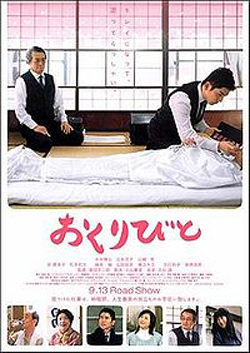 Departures (2008)
Departures (2008)
As the 2009 Oscar Award winner for best international film, Departures shows the ceremonial side of an often forgotten profession of encoffinment or the preparation of a deceased person for burial. The story follows Daigo Kobayashi who loses his position as a cellist in an orchestra and has to move back to his old hometown. While job hunting, Daigo interviews for the position of “Assisting Departures” for a “NK Agency.” He later learns that NK stands for nokan and the job duties involve the ceremony presentation of the recently deceased. At first, he is disgusted by the new line of work he has chosen, but eventually comes to accept and appreciate those who are left behind. This culminates in his discovery of his past and the future that lies ahead with him and his wife. It is a heart warming story that touches all who watch it and is definitely a must see for anyone interested in Japanese films.